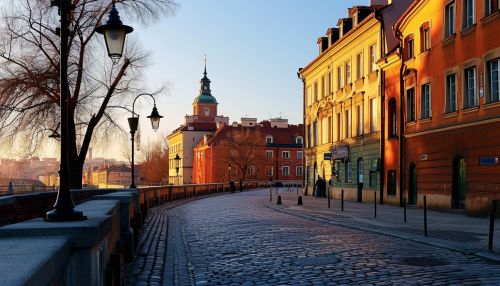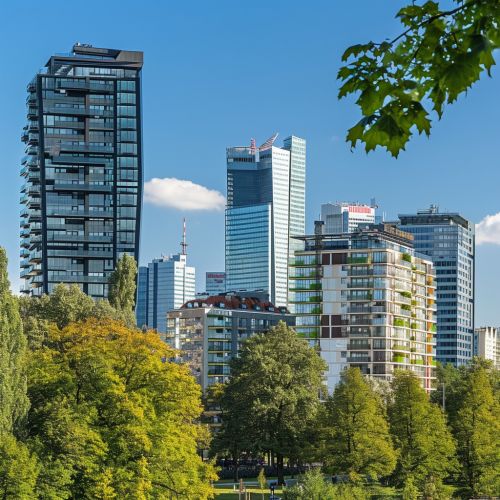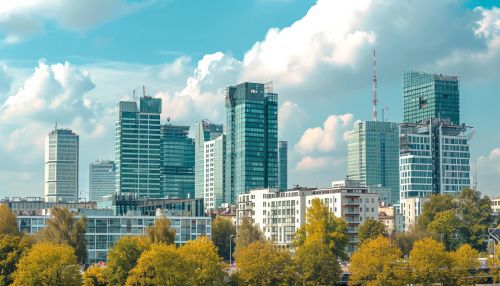Warsaw
History
Warsaw, the capital city of Poland, has a rich and complex history that spans over a millennium. The city's origins can be traced back to the 10th century when it was a small fishing village. It was first mentioned in written records in the 12th century, and by the 14th century, it had grown into a significant trade center.


Warsaw's strategic location at the crossroads of major trade routes contributed to its rapid development. In the 16th century, it became the political capital of the Polish-Lithuanian Commonwealth, a dual state, dualistic state of Poland and Lithuania ruled by a common monarch. During this period, Warsaw underwent significant transformations, with the construction of many architectural landmarks, including the Royal Castle and Wilanów Palace.
The city's prosperity, however, was interrupted by a series of wars and invasions. The Swedish invasions of the mid-17th century, known as the Deluge, resulted in significant destruction and depopulation. The city was rebuilt in the following decades, but its recovery was hampered by further conflicts, including the Great Northern War and the War of the Polish Succession.
In the late 18th century, Warsaw was annexed by the Kingdom of Prussia during the Partitions of Poland, a period of foreign domination that lasted over a century. Despite this, the city continued to be a center of Polish culture and resistance, with the establishment of institutions such as the Warsaw Lyceum and the Warsaw University of Technology.
The 19th century was marked by the November Uprising and the January Uprising, two major rebellions against Russian rule. Both uprisings were brutally suppressed, leading to increased Russification and repression.
Modern Era
The 20th century brought unprecedented challenges and transformations for Warsaw. The city was heavily damaged during both World Wars. During World War II, it was occupied by Nazi Germany and was the site of the Warsaw Ghetto, the largest Jewish ghetto in Nazi-occupied Europe. The Warsaw Uprising in 1944, a major operation by the Polish resistance Home Army to liberate Warsaw from German occupation, resulted in the systematic destruction of the city by the German forces.


After the war, Warsaw was rebuilt under the communist regime, with a focus on socialist realism in architecture. The city's historic Old Town was meticulously reconstructed, and in 1980, it was inscribed on the UNESCO World Heritage List.
Since the fall of communism in 1989, Warsaw has undergone significant economic and social transformations. It has emerged as a major international business and cultural hub, with a vibrant arts scene, numerous museums, and a dynamic culinary landscape.
Geography and Climate
Warsaw is located in east-central Poland, roughly 260 kilometers (160 miles) from the Baltic Sea and 300 kilometers (190 miles) from the Carpathian Mountains. It is situated on the Vistula River, the longest and largest river in Poland.
The city's geography is characterized by a mix of flat plains and rolling hills. The Vistula River divides the city into two parts: the left bank, which is mainly flat, and the right bank, known as Praga, which is more hilly.
Warsaw has a temperate-continental climate, with cold, snowy winters and warm, often humid summers. The city experiences significant seasonal variations, with temperatures ranging from -20°C (-4°F) in winter to 35°C (95°F) in summer.
Economy
Warsaw is the economic heart of Poland and one of the fastest-growing cities in the European Union. It is a major international center for business and commerce, with a diverse economy that includes sectors such as finance, manufacturing, information technology, and services.
The city is home to the Warsaw Stock Exchange, the largest and most important stock exchange in Central and Eastern Europe. It also hosts many multinational corporations and international organizations.
Warsaw's economy is also boosted by its status as a major tourist destination. The city's rich history, cultural heritage, and vibrant arts scene attract millions of visitors each year.
Culture
Warsaw is a vibrant cultural hub, with a rich tradition in the arts, music, and literature. The city is home to numerous museums, art galleries, theaters, and music venues.
The city's cultural institutions include the National Museum, which houses a vast collection of artworks from Poland and around the world, and the Warsaw Philharmonic, one of the leading orchestras in Europe.
Warsaw is also known for its literary heritage. It was the birthplace of renowned Polish authors such as Henryk Sienkiewicz, Bolesław Prus, and Isaac Bashevis Singer, all of whom have left a significant mark on Polish and world literature.
